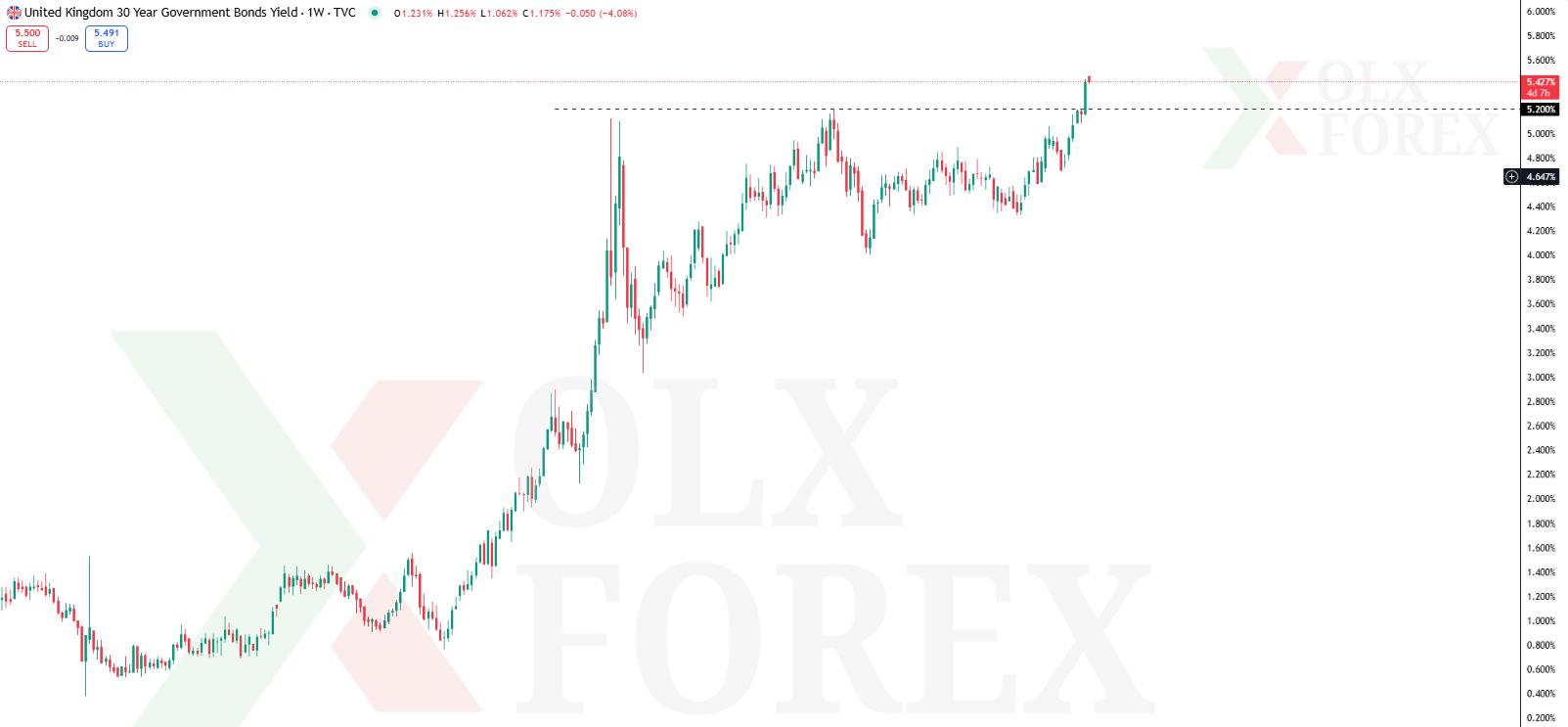
Euro-pound and the expectation of its next moves
Economic analysis:
The euro has risen strongly against the pound sterling over the past period, as the pound was in the crosshairs as the British markets were hit by rising government bond yields for the sixth day in a row, which started from the United States due to concerns about rising inflation and low chances of interest rate cuts by the Federal Reserve.
Yields rose further after the strong US jobs data released on Friday, as money markets no longer fully price any interest rate cut by the Fed this year.
The yield on ten-year British bonds (GB10YT=RR) rose by 4 basis points on Monday to 4.879%, which is slightly below the highest level recorded in 2008 at 4.925%. It also rose by more than 24 basis points last week, its biggest weekly rise in a year.
The yield on British 30-year bonds (GB30YT=RR) rose to a 27-year high on Monday to 5.472%.

And although rising revenues often support the currency, now they are moving in reverse with rising revenues, as analysts in Britain predict that the government will have to curb spending or increase taxes to meet its fiscal rules, which may negatively affect future growth and thus a decline in the currency.
Expectations are also trending this week on the British inflation data to be released next Wednesday, which may have a near-term impact on the monetary policy of the Bank of England.
Futures markets take into account about 16 basis points of easing at the Bank of England's February meeting, which means a probability of about 65% to cut interest rates by a quarter point.
On the other side of the eurozone, ECB chief economist Philip Lane said that services inflation should fall further in order to reach core inflation sustainably, and he believes that inflation pressure will continue to decline this year, and wage increases will slow down in 2025.
He said that we do not have to bring the eurozone into a recession to achieve our goal of price stability, nor do we see some kind of recession risk that would warrant a significant acceleration of monetary easing.
At the technical level:
The euro-pound pair rose as the previous forecasts were from here and has so far risen by more than 80 points.
We still expect the pair to complete the harmonic Nen stat pattern, which targets the levels of 0.8510/25 near the levels of the main downtrend on the two-day frame, especially after the pair broke through the upper limit levels of the descending wedge on the daily frame.
Any corrective pullback near the retest of this wedge we expect to be another opportunity for repurchase.
This bullish scenario fails if the wedge is broken down again and the candle closes a day below.

















